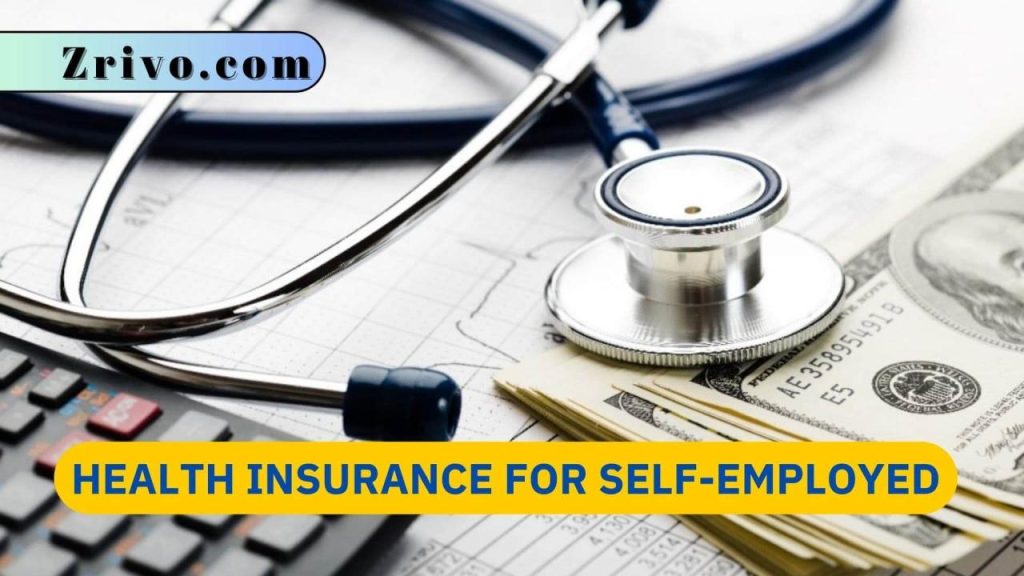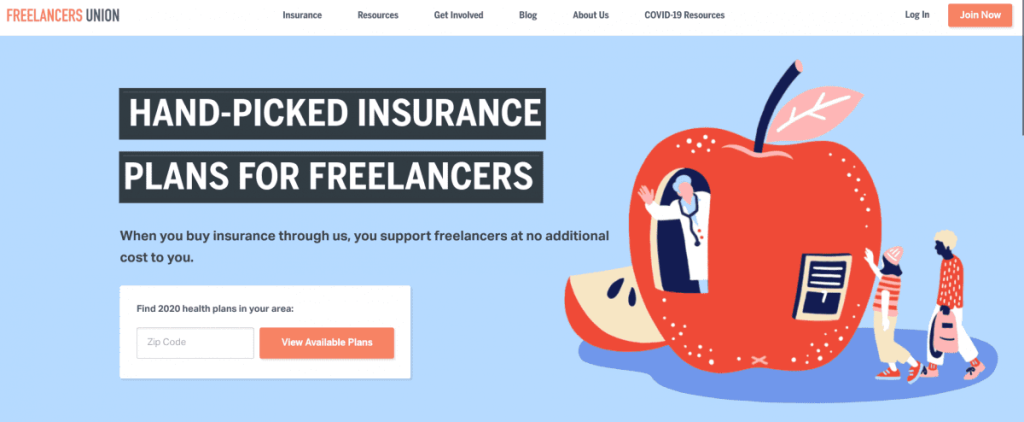Best way for self employed people to get health insurance – Best way for self-employed people to get health insurance, a matter of great concern for many, is a journey filled with intricate details and practical solutions. Understanding the various options, from individual market plans to COBRA, is key. Each choice carries its own set of benefits and drawbacks, impacting costs based on location, age, and health status. Navigating the marketplace demands a meticulous approach, comparing plans with care, understanding crucial factors like deductibles, co-pays, and coinsurance. Further exploration into financial aid and government support reveals additional pathways to affordable coverage.
This comprehensive guide will unravel the complexities, offering a clear path toward securing suitable health insurance. It will detail various options, costs, and benefits, helping you make informed decisions and find the best fit for your unique circumstances. Through detailed explanations, actionable steps, and practical resources, you will discover the most effective strategies to navigate the labyrinthine world of health insurance.
Understanding Health Insurance Options for Self-Employed Individuals

Navigating the complexities of health insurance as a self-employed individual can feel daunting. Fortunately, various options exist to ensure access to quality care. This exploration delves into the landscape of available plans, highlighting the factors influencing costs, and outlining the advantages and disadvantages of each.
Understanding the nuances of these plans empowers self-employed individuals to make informed decisions, ultimately securing the best possible coverage for their needs.
Types of Health Insurance Plans
Self-employed individuals have a range of health insurance options, each with unique characteristics. A comprehensive understanding of these options is crucial for choosing the most suitable plan.
- Individual Market Plans: These plans are purchased directly from insurance companies. Factors such as age, location, and health status directly influence premiums. Individual plans offer a degree of flexibility in tailoring coverage to specific needs, but the cost can be substantial, especially for those with pre-existing conditions. Premiums can vary considerably based on factors like location, age, and health status.
- Short-Term Health Insurance: These plans typically offer limited coverage for a set period, often ranging from a few months to a year. They may be appealing for individuals experiencing temporary gaps in coverage or for those with short-term health needs. However, short-term plans often exclude pre-existing conditions and have lower coverage limits than traditional plans. They are not a suitable long-term solution.
- COBRA (Consolidated Omnibus Budget Reconciliation Act): COBRA allows former employees to continue their employer-sponsored health insurance for a limited time after leaving their job. This can provide a bridge until securing alternative coverage. However, COBRA premiums are typically higher than individual market plans, and the duration of coverage is restricted. It’s essential to understand the financial implications of this option before committing.
- Medicare/Medicaid: Eligibility for these government-sponsored programs depends on specific income and age criteria. These plans offer extensive coverage for eligible individuals, but access may be limited and involve complex eligibility requirements.
Factors Influencing Health Insurance Costs
Several factors contribute to the cost of health insurance for self-employed individuals. Understanding these factors is crucial for making informed choices.
- Location: Health insurance costs can differ significantly across geographic areas. Cost of living and the availability of healthcare providers influence pricing in specific regions.
- Age: Age is a key factor in determining premiums. Younger individuals generally pay lower premiums, while older individuals often face higher costs.
- Health Status: Pre-existing conditions can significantly impact the cost of insurance. Insurance companies may adjust premiums or exclude coverage for individuals with certain pre-existing conditions.
Comparison of Health Insurance Plans
The following table provides a comparative overview of different health insurance plans for self-employed individuals. It highlights costs, benefits, and potential drawbacks of each plan.
| Plan Type | Cost | Benefits | Drawbacks |
|---|---|---|---|
| Individual Market Plans | Variable, often higher than group plans | Flexibility in tailoring coverage, potentially broader network | Higher premiums, potential exclusion of pre-existing conditions |
| Short-Term Health Insurance | Potentially lower than individual plans, but limited duration | Temporary coverage | Limited coverage, exclusions for pre-existing conditions, often lower benefits |
| COBRA | Typically higher than individual market plans | Temporary continuation of employer-sponsored coverage | Higher premiums, limited duration, administrative complexities |
| Medicare/Medicaid | Government-subsidized, often lower costs for eligible individuals | Extensive coverage, government support | Eligibility criteria, potential limitations in network access |
Navigating the Marketplace and Finding Affordable Plans

Finding the right health insurance plan on the marketplace can feel overwhelming, especially for the self-employed. This process, however, is crucial for ensuring access to vital healthcare coverage. Understanding the strategies for finding affordable plans, comparing coverage options, and evaluating essential plan details like deductibles, co-pays, and coinsurance is key to making informed decisions.
The marketplace provides a central platform for comparing various health insurance plans, enabling you to tailor coverage to your needs and budget. Navigating this platform effectively allows for the selection of affordable plans, aligning with individual financial circumstances. By understanding the nuances of plan details, you can confidently choose a plan that offers suitable coverage without breaking the bank.
Strategies for Finding Affordable Plans
The marketplace offers a range of plans, often differentiated by their level of coverage and premium costs. A crucial strategy is to utilize comparison tools provided by the marketplace. These tools allow for customized searches, filtering by location, budget, and specific needs. Researching plans available in your area and considering your personal health situation are vital steps.
Comparing Plans and Evaluating Coverage Options
The process of comparing plans involves meticulous examination of their key features. This entails scrutinizing the specific services covered, noting any exclusions or limitations, and thoroughly analyzing the cost structure. A crucial element is understanding the coverage levels offered by each plan, which helps in determining the most suitable plan.
Understanding Deductibles, Co-pays, and Coinsurance
These three elements form the core of a plan’s cost structure. Deductibles represent the amount you pay out-of-pocket before your insurance begins to cover costs. Co-pays are fixed fees for specific services, such as doctor visits or prescriptions. Coinsurance is the percentage of costs you pay after meeting the deductible. Understanding these components allows you to accurately assess the total cost of care.
Step-by-Step Guide to Comparing Health Insurance Plans
| Plan Name | Premium | Deductible | Copay (Example: Doctor Visit) | Coverage Details |
|---|---|---|---|---|
| Plan A | $350/month | $2,000 | $25 | Comprehensive coverage, including preventive care, specialist visits, and prescription drugs. |
| Plan B | $200/month | $4,000 | $50 | Covers essential services, with higher deductibles and lower premiums. |
| Plan C | $400/month | $1,500 | $15 | Extensive coverage, including dental and vision care. |
This table provides a simplified example. Remember to thoroughly review the specific details of each plan, as coverage and costs can vary significantly. Consult the plan’s summary of benefits and coverage (SBC) document for a comprehensive understanding. Carefully analyze the plan’s network of providers, as in-network care often results in lower costs. Factor in your anticipated healthcare needs to choose the best fit.
Exploring Additional Resources and Support for Self-Employed Individuals: Best Way For Self Employed People To Get Health Insurance

Securing health insurance as a self-employed individual can feel daunting. However, various resources and support systems are available to ease the process and help you navigate the complexities of the marketplace. Understanding these options can significantly reduce the financial burden and ensure you have access to quality healthcare.
Accessing affordable health insurance isn’t solely dependent on your income; supplementary support is often available. Leveraging these resources can make the process more manageable, ensuring you can prioritize your well-being without compromising your financial stability.
Government Assistance Programs
Government assistance programs play a crucial role in making health insurance accessible to those who qualify. These programs often offer subsidies or reduced premiums, making healthcare more affordable. Understanding the eligibility criteria and application process is key to maximizing your benefits.
- Affordable Care Act (ACA) Marketplace Subsidies: The ACA marketplace offers subsidies to help lower- and middle-income individuals and families afford health insurance. These subsidies are based on income and household size. The application process typically involves filling out an application on the Healthcare.gov website and providing relevant financial information.
- Medicaid and CHIP: Medicaid and CHIP (Children’s Health Insurance Program) provide health coverage to low-income individuals and families, including children. Eligibility is determined by income and other factors, such as household size and presence of dependent children. The application process varies by state, and it’s often handled through state-specific health departments.
Online Resources and Financial Aid, Best way for self employed people to get health insurance
Various online resources and financial aid programs can provide guidance and support. These resources offer valuable information and tools to navigate the insurance marketplace and identify suitable options.
- Health Insurance Navigators: These navigators are trained professionals who can help you understand your options and complete applications for government assistance programs. They provide personalized support and guidance throughout the entire process. Navigators are often available through local community centers and non-profit organizations.
- Non-profit Organizations: Numerous non-profit organizations provide financial assistance and resources for healthcare. These organizations often partner with insurance providers to offer affordable plans or subsidies to eligible individuals.
Applying for and Receiving Financial Assistance
The process for applying for and receiving financial assistance for health insurance varies depending on the program. Typically, it involves submitting documentation and completing applications.
- Documentation Requirements: Gathering the necessary documents, such as income statements, tax returns, and proof of residency, is essential. These documents validate your eligibility for certain programs.
- Application Process: Applications often involve online portals, forms, and in-person visits. It’s critical to carefully review and complete all required sections accurately. Following instructions meticulously is vital to ensure a smooth and efficient application process. The application process is generally straightforward, but it’s important to follow each step carefully.
Government Agencies and Organizations Offering Support
Various government agencies and organizations provide support to self-employed individuals seeking health insurance. These entities offer valuable resources and guidance throughout the process.
| Resource Name | Eligibility Requirements | Contact Information | Website Link |
|---|---|---|---|
| Affordable Care Act Marketplace | Based on income and household size | Call the Marketplace customer service line or use the online chat function. | Healthcare.gov |
| Medicaid/CHIP | Low income, families with children | Contact your state’s Medicaid agency. | (Link to state Medicaid website) |
| Local Health Departments | Varies by location; often based on income and need | Search online for your local health department | (Link to local health department website) |
| Non-profit Organizations | Varies by organization; often based on income and need | Search online for local non-profit organizations offering health insurance assistance. | (Links to relevant non-profit websites) |
Sorted, getting health insurance as a self-employed geezer can be a right pain. Thinkin’ about the best route, though, it’s like trying to navigate the choppy waters of the health insurance market. You gotta be savvy, like a seasoned captain plotting a course for a luxury yacht – check out this article on Essential Features to Keep Your Luxury Yacht Safe on Global Adventures for a different kind of planning.
It’s all about finding the right policy, a good deal, and keeping those medical bills from sinking you, you know?
